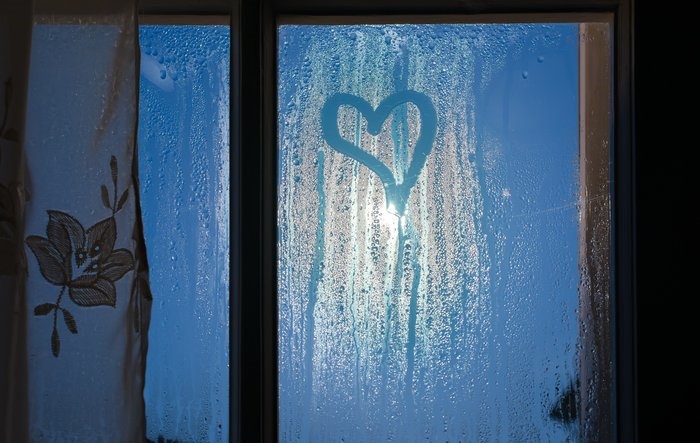Most New Zealanders want to enjoy the benefits of an energy efficient home – this can be easily achieved if we all do our bit to help.
With small improvements, we can lessen the cost of power bills, make our homes work more efficiently for us, and provide a warmer, healthier environment for our families.
One of the best initiatives ever was the introduction of the new minimum standards for every home in New Zealand built from October 2007, to include double glazing. This also included any major extensions to existing homes.
Without too much effort, we can reduce the cost of power bills, and make our homes and workplaces work more efficiently for us.
Unfortunately, and often due to lack of knowledge, there are times when we waste precious energy in our homes and buildings.
Here are some ways you can avoid waste and reduce your energy bill, just by making some small adjustments.
An energy efficient home doesn’t have leaky windows
Many of us would have experienced at some time, cold air entering the house through leaky windows. Windows are known as the “weakest link” when it comes to retaining the heat of your home during winter, and keeping it out in summer.
Single glazed windows conduct heat 10 times more readily than insulated walls, and the reason why windows are so cold during the winter is because they lose so much heat, which produces a downdraft of cold air and that other pest – condensation.
Double glazing windows are a big improvement over single glazing, but they still conduct much more heat than walls, floors or roofs.
You might think fewer windows would be a good idea, and while this does improve the overall insulation of a house, it also limits the amount of natural light. If the windows of your house are placed correctly to get maximum light from the sun, this will be absorbed and trapped within the house, giving you warmth from the winter sun.
You want to keep the warm air trapped inside, thereby saving money on your power bill, by keeping the cold air out.
Retain the heat from the sun during the day
As soon as the sun goes down, make it a priority to draw your curtains and blinds to retain the day’s heat. If you have well-fitted curtains that cover the whole window, reach the floor and are backed with a thick fabric, you are making headway.
If you don’t have double-glazed windows and your budget doesn’t allow for this in the near future, you could try DIY window-film kits.
You can get these from a hardware store and once installed, can cut down heat loss through windows by half.
It won’t cost you much at all and they do provide an indoor insulation barrier and save on your home energy. Draught stops are another way you can make big savings.
A dry home is a healthy home
If you have an area under your house where you can access, lay down some black plastic sheeting on top the dirt, as this helps to keep the dampness away. Another simple thing to do is check all the underfloor vents to make sure they are free from blockages. Make sure you attend to any leaking pipes and clean gutters if they become blocked, as they can cause moisture inside which then leads to mould.
Be mindful of other areas in your home that could be contributing to moisture: cooking, showering and laundry washing, will all add moisture to your home, and the best way to counteract this is to open the windows during these activities, especially if you don’t have external extraction fans and vents. Make use of the sun and fresh air to dry your laundry, and only use driers when necessary. Get into the habit of opening your doors, windows and wardrobes, as this enables air to escape and prevents prevent moisture getting into your clothes.
If you can sleep with your windows open, even just a little bit, this will allow moisture to escape that naturally builds up during the night.
On a warm, sunny, winter’s day air your bedding outside. Pillows, duvets and blankets all absorb moisture over time and with a good airing, they will fresh and new again.
Cutting back on hot water doesn’t have to be uncomfortable
Showers, of course, use much less water than a bath, and with today’s efficient showerheads now available, installing one of these will give you a great shower and save your water at the same time.
The average family uses around 17% of their water daily in the shower, which is nearly 40 gallons a day.
If your children love to play in the shower, this amount will increase. If you install a low water pressure shower head, you will be able to avoid wasting your water. Some of the water saver shower heads can use up to 40% less water and therefore less power, even if you do end up taking longer showers.
We would all love to luxuriate under a hot shower for ever in the winter, but think about this: a 15 minute shower costs around a dollar, a five minute shower about 33 cents, so a family of four can save $18 a week just by making a small adjustment and having shorter showers – over a year, that works out to about $900, a very good saving!
With the technology available in new washing machines today, you can wash in cold water and still get your clothes clean, unless of course, you have a particularly dirty load. A hot wash will use 90% more power than a cold wash.
Putting your appliances on standby when not in use
You can save approximately $100/year by having your appliances on standby when not in use. The biggest suckers of power are your entertainment units: TV, stereo, computer equipment, and game consoles. If you have them all plugged into a multi-board, you can same time by switching them all off at the same time. If you are after even further savings, turn whiteware off at the wall. for further savings.
Heated towel rails are a luxury we love! But if you keep them on for only 4 hours a day, you will save about $130 a year. You can also buy timers for towel rails that come on automatically, so you don’t even have to think about it.
Do you have a fridge to keep your drinks cold in summer? If it’s an old model, it will be inefficient and be costing you money. If you have trouble closing the fridge door, check the seal to make sure it is tight and if not, ger the seals replaced. If your fridge is really old, it might pay to get rid of it.
If you are serious about your environment, your power bills and providing the best for your family’s health, you can be confident that heat pumps are the way of the future.
In this beautiful country we call home, New Zealanders are spoilt on many levels with our natural, pristine, beauty. But, there are always aspects of our lives that need consistency across all ages and incomes, and that is an indoor living environment that is healthy and comfortable for all families.
Heat pumps don’t create heat, they transfer heat from one source to another, making them a renewable energy source that doesn’t eat away at our most valuable non-renewable resources. This very clever technology will keep New Zealanders warm in the winter and as they can double as an air conditioner in the summer, they have an all year round purpose.
If you want to talk to the experts give the team at Heat and Cool, what they don’t know about heat pumps is not worth knowing!
So, let’s be good Kiwis and spread our sustainability wings far and wide. Talk to the team at Heat and Cool about having a heat pump installed now – save our planet, one heat pump at a time.
And don’t forget to check out our Specials page here where we have deals going all the time.
You might just get yourself a bargain!





